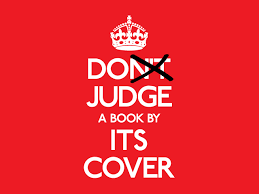Your cart is currently empty!
What should I wear at job interviews?

The question of what should I wear at job interviews pops up here and there.
Why? Well, because everyone knows job interviews are crucial. Based on a job interview, the recruiter and/or hiring manager decide whether or not they see you as a suitable candidate. That is precisely why you need to be well-prepared for job interviews! In this article, we’ll cover the very first step – the dress code.
First impressions
Let’s get one thing straight – no matter how advanced the human race gets, appearance matters. And that means that your question of what I should wear at job interviews matters, too.
You’ve only got one shot at leaving a good first impression!
And this also is applicable when we talk about job interviews. Therefore, make sure you dress appropriately for your job interview, that your perfume/cologne is not too strong, that your make-up is discrete (if you wear it), and that your hair looks nice and tidy. Regardless of what you might think of this shallow advice, it can help immensely at job interviews.
Everyone has heard the phrase “don’t judge a book by its cover,” right? But then again, you probably wouldn’t buy a book with a werewolf on the front cover if you don’t like horror stories, correct? Covers exist to give the most accurate idea possible and to appeal to the targeted readers.
Therefore, we come to the following conclusion: judge the book by its cover. That’s why it’s there. Let’s take a closer look at dress codes for job interviews.
The world of job seekers
Transfer the situation into the world of job seekers and job interviews. First impressions are equal to book covers. They can often be wrong, but they are all you’ve got. And that’s why what you wear at job interviews counts.
The job interview environment is not a forgiving one. Certainly, you will not get a second chance.
The interviewers will base their decisions on a limited amount of information in a limited amount of time. It is, of course, clear that the way you dress does not represent your qualifications or fitness for the role. However, to the person deciding whether you get the job or not, how you look can be a well of information. Make sure to respect that and keep it in mind.
The golden rule: do your research
It goes without saying: it’s crucial to learn as much as you can about the company you’d like to work for. Job interviews are no joke at any company and that is why you need to do your part and research. Learn how you can present your skills and qualifications in a way that’s relevant to them.
It’s the same when choosing what to wear: find out their dress code. You don’t want to show up in a three-piece suit or a fancy dress piece if it’s a casual environment. You’ll stick out like a sore thumb, and the interviewer will assume you won’t fit the collective or the role. The same goes if you underdress: at best, you won’t be taken seriously, at worst, the employer will think you are unprofessional or don’t care about the job.
Call the front office or ask the person who scheduled your interview about attire expectations. Even better, take the time to see for yourself what the employees are wearing and always dress a step more conservatively than them. After all, you’ll be there to impress and you have to look the part. They have already done that and can afford to relax a bit.
What to wear if you DON’T want the job
Make absolutely sure your clothes are clean, fresh, and ironed. Nothing leaves a bad impression like an untidy appearance: it shows sloppiness and irresponsibility. Don’t wear anything revealing, uncomfortable, or ill-fitting.
Also, try to sport a subdued palette. If you decide to wear something brightly colored, make sure the rest of your outfit is toned down to make up for it. Screaming, flashy colors will only draw attention to your attire. And that is not something you want. For the same reason, you should avoid unnecessary and eye-catching accessories, such as huge earrings, too many bracelets, or over-the-top belt buckles. You want the interviewer to hear your words, not your gesticulation.
Keep make-up natural and light and your hairstyle appropriate, and whatever you do, keep your perfume or cologne use minimal: some interviewers may be allergic to the smell. Even if not, you don’t want your fragrance to spend more time at the company than you did.
When in doubt: dress up
Unless you’re sure the company you’re applying at frowns upon formal dress codes, it’s generally best to wear a classic suit and tie or a fitted blazer and matching pants/skirt. Most companies have business or business casual dress codes, and classic will probably never get you in trouble.
A navy blue, grey or black suit, with a light button-down shirt, appropriate tie, dark socks, and matching shoes and belt will go a long way towards leaving a great first impression. A suit of similar subdued colors, an appropriate blouse or a shirt, a knee-length skirt, conservative shoes, and a matching bag will do the trick almost always. An appropriate, professional dress is also great. Make sure your face, hair, and hands are clean, groomed, and tidy, and your breath is fresh.
Don’t be fooled: appearance matters. You only get one shot at leaving a good first impression so make sure you dress appropriately, no matter how shallow you might think it is. Don’t let your fashion choices speak for you, do it yourself.
If you need help with job interview prep, read more of our Blog – there are plenty of posts about this particular topic. Alternatively, you can reach out and schedule a one-off career coaching session.
No interviews?
Of course, getting to the interview phase is an achievement, and if you’re struggling with landing interviews, look at your CV. It needs to reflect who you are and convince the reader you’re capable of taking on the job. If it’s not doing that, then you need to rewrite it. We’ve written about CV writing many times before so browse our blog to get to the good stuff.
Or, you can get our step-by-step CV writing guide which is a result of years of experience. Follow the principles outlined in it and see how you get more replies to job applications in no time! It’s available for you here.
[html_block id=”8293″]
















Leave a Reply